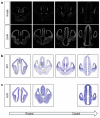Aicardi Syndrome Is a Genetically Heterogeneous Disorder
- PMID: 37628618
- PMCID: PMC10454071
- DOI: 10.3390/genes14081565
Aicardi Syndrome Is a Genetically Heterogeneous Disorder
Abstract
Aicardi Syndrome (AIC) is a rare neurodevelopmental disorder recognized by the classical triad of agenesis of the corpus callosum, chorioretinal lacunae and infantile epileptic spasms syndrome. The diagnostic criteria of AIC were revised in 2005 to include additional phenotypes that are frequently observed in this patient group. AIC has been traditionally considered as X-linked and male lethal because it almost exclusively affects females. Despite numerous genetic and genomic investigations on AIC, a unifying X-linked cause has not been identified. Here, we performed exome and genome sequencing of 10 females with AIC or suspected AIC based on current criteria. We identified a unique de novo variant, each in different genes: KMT2B, SLF1, SMARCB1, SZT2 and WNT8B, in five of these females. Notably, genomic analyses of coding and non-coding single nucleotide variants, short tandem repeats and structural variation highlighted a distinct lack of X-linked candidate genes. We assessed the likely pathogenicity of our candidate autosomal variants using the TOPflash assay for WNT8B and morpholino knockdown in zebrafish (Danio rerio) embryos for other candidates. We show expression of Wnt8b and Slf1 are restricted to clinically relevant cortical tissues during mouse development. Our findings suggest that AIC is genetically heterogeneous with implicated genes converging on molecular pathways central to cortical development.
Keywords: DNA repair; DNA sequencing; X-linked; developmental epileptic encephalopathy; sex bias; wnt signalling.
Conflict of interest statement
The authors declare no conflict of interest. The funders had no role in the design of the study; in the collection, analyses, or interpretation of data; in the writing of the manuscript; or in the decision to publish the results.
Figures



References
Publication types
MeSH terms
LinkOut - more resources
Full Text Sources
Molecular Biology Databases
Research Materials

